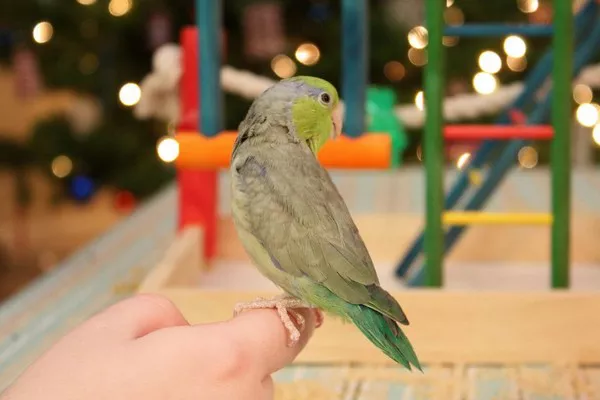The Sun Conure (Aratinga solstitialis), a vibrant parrot species native to northeastern South America, is renowned for its dazzling plumage of gold, orange, and green. Its bright colors and engaging personality make it a popular pet and a symbol of avian beauty. However, despite its appeal, the Sun Conure is classified as endangered. This article explores the various factors contributing to its endangered status, provides insights into the conservation efforts underway, and examines the broader implications of its plight for avian biodiversity.
The Natural History of the Sun Conure
Before delving into the reasons for Sun Conure’s endangered status, it is crucial to understand the natural history of the Sun Conure. Native to parts of Brazil, Venezuela, Guyana, Suriname, and French Guiana, the Sun Conure inhabits tropical rainforests, particularly in the coastal regions and riverine areas of its range. These parrots are social, often found in small flocks, and are known for their distinctive calls and colorful feathers.
Habitat and Behavior:
Habitat: The Sun Conure prefers subtropical and tropical forests, where it can find an abundance of food and nesting sites. It thrives in areas with dense foliage that provides cover and access to fruits, seeds, and nuts.
Social Structure: In the wild, Sun Conures are highly social birds, typically forming small to medium-sized flocks. They exhibit complex social interactions and rely on these groups for communication, protection, and foraging.
Despite their vibrant presence and social nature, Sun Conures face several threats that have led to their classification as endangered by the International Union for Conservation of Nature (IUCN).
Major Threats to Sun Conures
Habitat Loss and Degradation
One of the primary threats to the Sun Conure is habitat loss and degradation. The destruction of tropical rainforests due to logging, agriculture, and urban development has significantly reduced the bird’s natural habitat.
Deforestation:
Logging: Both legal and illegal logging activities have led to the extensive clearing of forest areas, reducing the available habitat for Sun Conures.
Agricultural Expansion: The conversion of forested land into agricultural fields for crops such as soybeans and palm oil results in the loss of critical foraging and nesting sites.
Impact on the Sun Conure:
Loss of Food Sources: Deforestation diminishes the availability of fruits, seeds, and nuts that are essential to the Sun Conure’s diet.
Nesting Sites: The removal of trees impacts the availability of natural nesting sites, forcing birds to seek alternative, often less suitable, locations.
Illegal Pet Trade
The Sun Conure’s striking appearance and friendly demeanor have made it a popular species in the illegal pet trade. This trade poses a significant threat to the species in the wild.
Pet Trade Dynamics:
Capture and Transport: Many Sun Conures are captured from their natural habitats to be sold in the pet trade. This often involves illegal trapping and transport methods that can be harmful or fatal to the birds.
Demand for Exotic Pets: The high demand for exotic pets, including Sun Conures, fuels this illegal trade, leading to significant population declines in the wild.
Impact on Populations:
Population Decline: The removal of individuals from the wild disrupts social structures and reduces the overall population size.
Genetic Diversity: Capturing a large number of individuals from a small population can lead to a loss of genetic diversity, making the species more vulnerable to diseases and environmental changes.
Climate Change
Climate change is an emerging threat that impacts a wide range of species, including the Sun Conure. Changes in climate patterns can have several detrimental effects on their habitat and food sources.
Effects of Climate Change:
Temperature Changes: Altered temperature patterns can affect the availability of food and nesting sites. Extreme temperatures can also impact the health of individual birds.
Weather Patterns: Changes in rainfall and weather patterns can lead to more frequent and severe weather events, such as storms and droughts, which can disrupt habitat and food availability.
Implications for the Sun Conure:
Habitat Shifts: Climate change may force Sun Conures to migrate to less suitable habitats, reducing their chances of survival.
Food Supply: Changes in the abundance and distribution of food sources due to altered climate patterns can affect the bird’s ability to find adequate nourishment.
Human-Wildlife Conflict
Human-wildlife conflict is another significant threat to the Sun Conure. As human populations expand, interactions between humans and wildlife increase, sometimes resulting in negative outcomes for the birds.
Conflict Examples:
Crop Damage: Sun Conures may feed on crops and fruits grown by farmers, leading to conflicts with agricultural activities. In some cases, farmers may resort to killing or capturing the birds to protect their crops.
Habitat Encroachment: As human settlements expand into previously uninhabited areas, Sun Conures may face increased risks from habitat encroachment and disturbance.
Consequences:
Direct Harm: Human activities can directly harm Sun Conures, either through intentional actions or accidental encounters.
Displacement: Human encroachment on natural habitats can displace Sun Conures, forcing them to relocate to less suitable areas.
Conservation Efforts
Efforts to conserve the Sun Conure are essential to ensuring the survival of this beautiful species. Various organizations, governments, and conservationists are working to address the threats and implement strategies to protect the Sun Conure.
Habitat Protection and Restoration
Protecting and restoring the Sun Conure’s natural habitat is crucial for its conservation.
Initiatives:
Protected Areas: Establishing and maintaining protected areas or reserves in regions where Sun Conures are found can help preserve critical habitats and reduce deforestation.
Reforestation Projects: Reforestation efforts aimed at restoring deforested areas can help rebuild the natural habitat and provide essential resources for Sun Conures.
Impact:
Habitat Preservation: By protecting and restoring natural habitats, we can ensure that Sun Conures have access to the food sources and nesting sites they need.
Long-Term Sustainability: Sustainable land management practices can help balance human activities with the conservation of avian species.
Combating the Illegal Pet Trade
Efforts to combat the illegal pet trade are crucial for protecting the Sun Conure and other species affected by this issue.
Strategies:
Enforcement: Strengthening and enforcing laws against illegal wildlife trade can help reduce the capture and sale of Sun Conures.
Public Awareness: Raising awareness about the impact of the illegal pet trade and promoting responsible pet ownership can help reduce demand for exotic pets.
Impact:
Population Stabilization: Reducing the capture of Sun Conures from the wild can help stabilize and increase their populations.
Ethical Practices: Promoting ethical practices in the pet trade and supporting captive breeding programs can provide alternative sources for pet birds.
Climate Change Mitigation
Addressing climate change is a global challenge that requires coordinated efforts at various levels.
See Also: Why Is My Sun Conure Sneezing?
Actions:
Reducing Greenhouse Gas Emissions: Implementing measures to reduce greenhouse gas emissions can help mitigate the effects of climate change on wildlife habitats.
Climate Resilience: Developing strategies to enhance the resilience of habitats and wildlife populations can help them adapt to changing climate conditions.
Impact:
Habitat Protection: Effective climate change mitigation can help protect and preserve the natural habitats of Sun Conures and other species.
Long-Term Survival: By addressing climate change, we can support the long-term survival and health of avian populations.
Research and Monitoring
Ongoing research and monitoring are essential for understanding the needs of the Sun Conure and developing effective conservation strategies.
Research Focus:
Population Monitoring: Tracking population trends and assessing the health of Sun Conure populations can provide valuable data for conservation efforts.
Behavioral Studies: Understanding the behavior and ecology of Sun Conures can inform habitat management and protection strategies.
Impact:
Informed Decisions: Research provides the information needed to make informed conservation decisions and adapt strategies as needed.
Adaptive Management: Monitoring allows for adaptive management of conservation efforts based on real-time data and changing conditions.
The Broader Implications of Sun Conure Conservation
The conservation of the Sun Conure has broader implications for avian biodiversity and ecosystem health. Protecting this species contributes to the overall health of tropical rainforest ecosystems, which are home to countless other species of plants and animals.
Ecosystem Health:
Biodiversity: The conservation of the Sun Conure helps maintain the biodiversity of tropical rainforests, which are critical for the health of the planet.
Ecological Balance: Healthy populations of Sun Conures contribute to the ecological balance by participating in seed dispersal and other ecological processes.
Conservation Awareness:
Education: Efforts to conserve the Sun Conure raise awareness about the importance of protecting endangered species and their habitats.
Global Impact: By addressing the threats facing the Sun Conure, we contribute to global conservation efforts and support the protection of other threatened species.
Conclusion
The Sun Conure, with its striking appearance and vibrant personality, faces significant threats that have led to its endangered status. Habitat loss, illegal pet trade, climate change, and human-wildlife conflict all contribute to the challenges facing this species.
Conservation efforts, including habitat protection, combating the illegal pet trade, addressing climate change, and conducting research, are essential to ensuring the survival of the Sun Conure. By taking these actions, we not only help protect this beautiful parrot but also contribute to the broader goal of preserving avian biodiversity and maintaining the health of tropical ecosystems.
The plight of the Sun Conure serves as a reminder of the interconnectedness of species and the importance of comprehensive conservation strategies. Through continued efforts and global cooperation, we can work towards a future where Sun Conures and other endangered species thrive in their natural habitats.
Related Topics:























